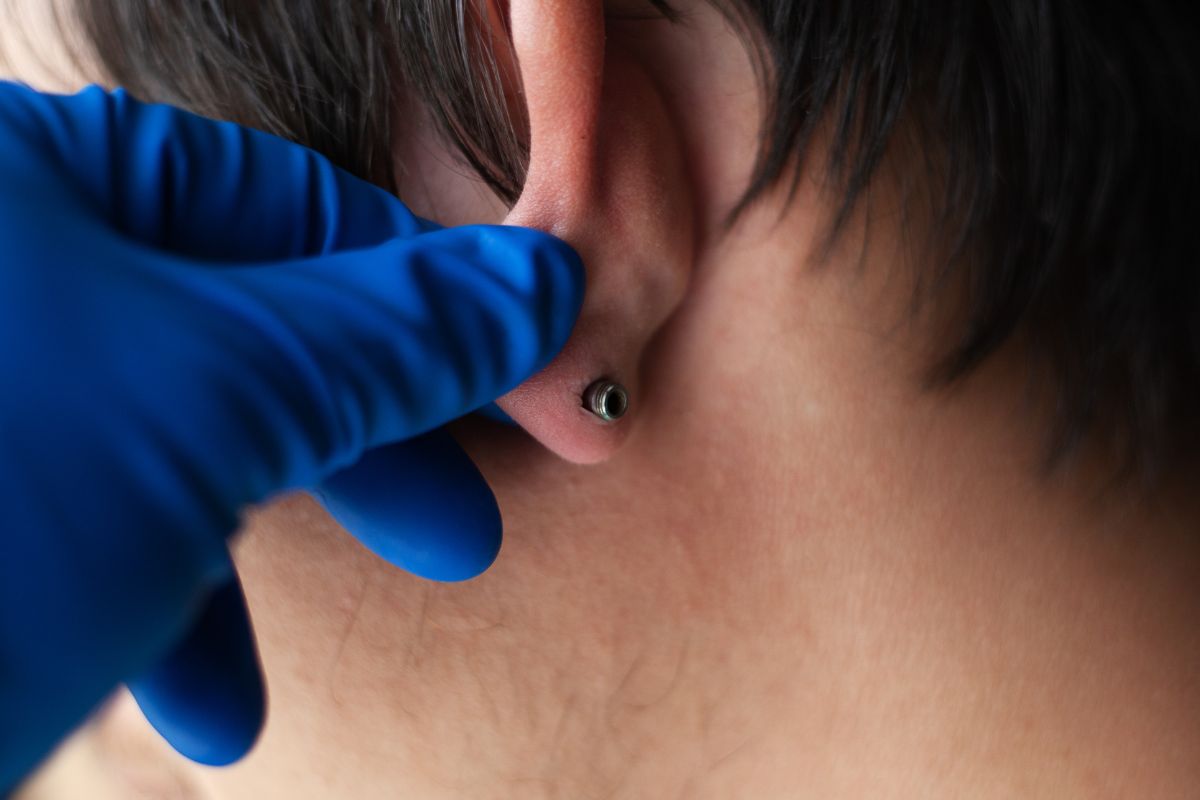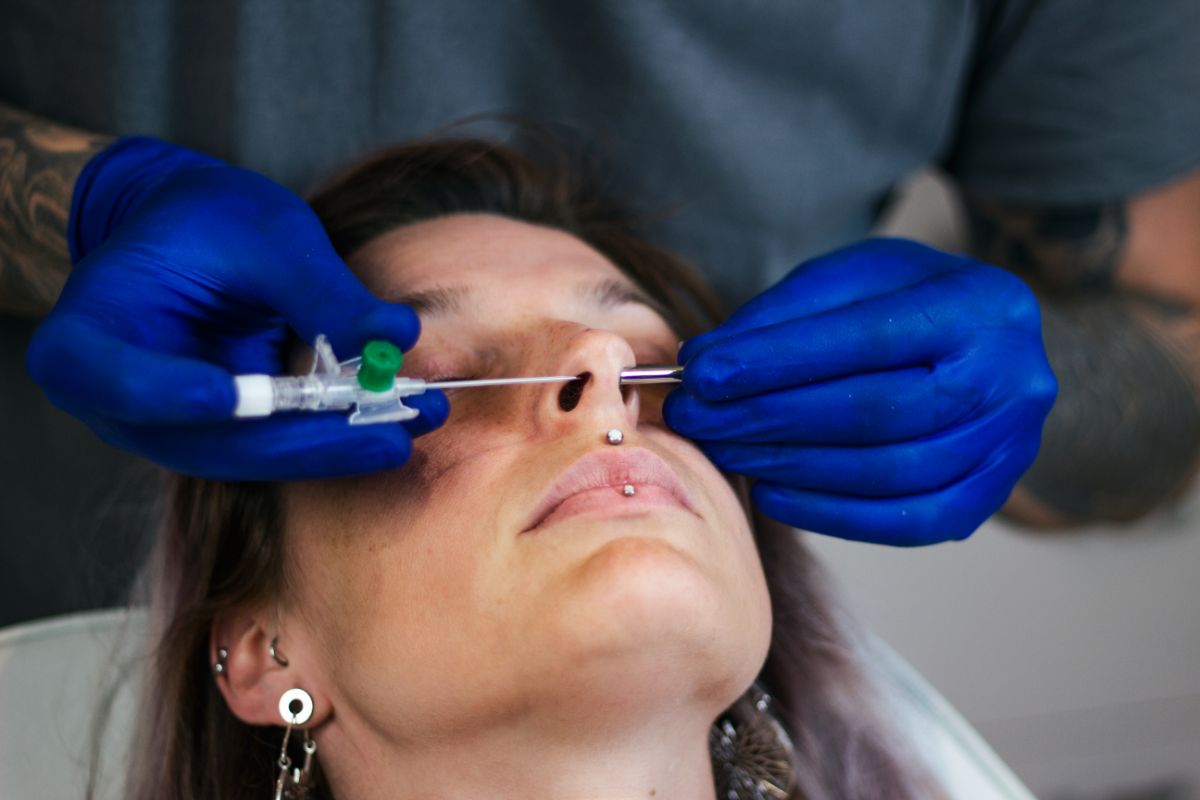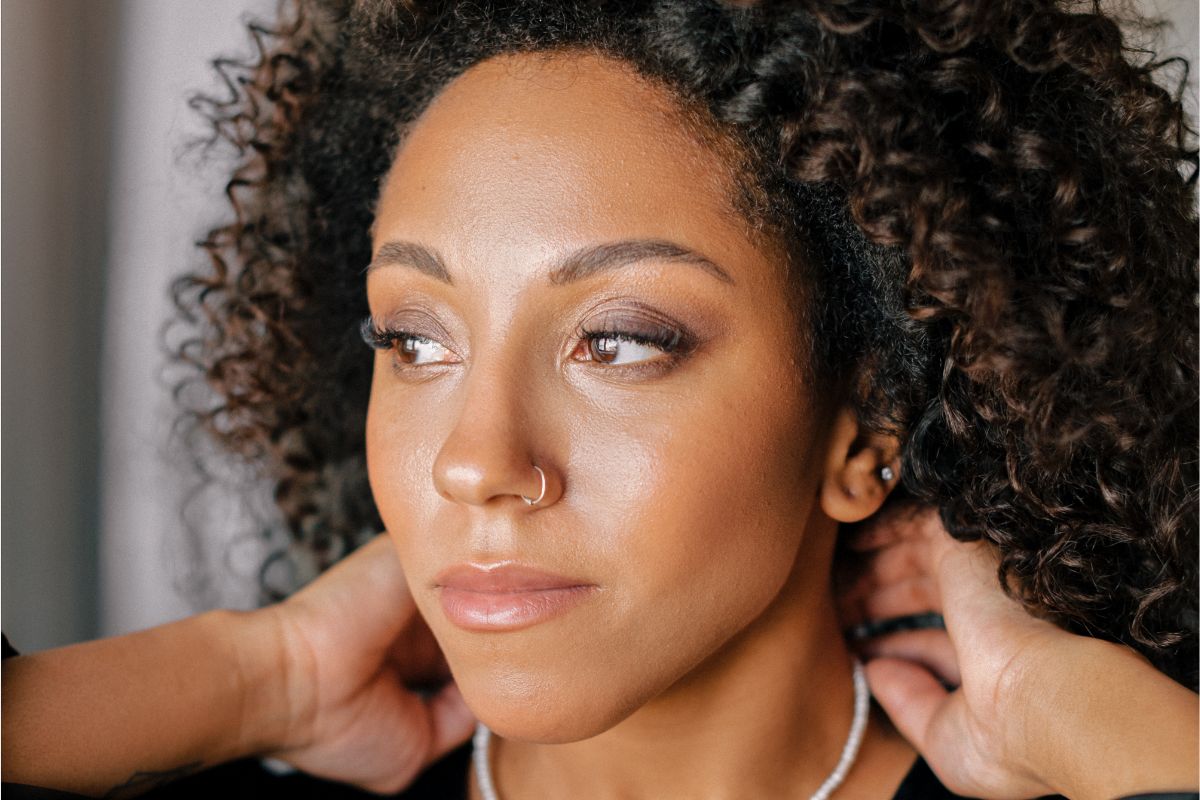If you’ve ever had a piercing, only to develop a nasty, persistent bump around the piercing site, you may have developed a keloid.
Piercing keloids aren’t that common, and they can be pretty difficult to get rid of. However, they’re not always a sign that your piercer has done anything wrong.
Some people are more susceptible to keloids than others, but by keeping on top of your piercing aftercare, you can help prevent keloids from forming.
These pesky, overgrowths of scar tissue can occur on almost any piercing site, but they’re most common around the ear lobes and cartilage.
So, what exactly does a keloid look like, how is it different from a piercing bump, and how can you treat it?
Here’s everything you need to know about piercing keloids.
What Is A Piercing Keloid?
A keloid is a type of scar tissue that forms after an injury - or in this case, your piercing.
Keloids are essentially an overgrowth of scar tissue on your body, and although they can develop around most piercings, they’re particularly common after ear piercings and can develop on the ear lobe and the cartilage.
When your piercing wound starts to heal up, new, fibrous scar tissue will begin replacing your old tissue. If the body produces too much tissue, it will lead to the development of a keloid.
Any excess tissue will start spreading out from the site of the wound, developing a bump that’s often larger than the original piercing hole.
Although some keloids can appear quickly, most will take several months to start developing around the piercing site. Keloids will vary in size, and some will continue to grow slowly for several months.
Piercing Bump VS Keloid
Keloids are often confused with piercing bumps, another skin condition that can develop after a piercing. However, keloids and piercing bumps are not the same and will require different treatments.
How Is A Piercing Bump Different From A Keloid?
Piercing bumps often appear much quicker after the initial piercing, and they won’t grow in size.
Your body will develop a bump as a natural response to the piercing trauma, and you can think of it as a type of temporary swelling that may feel tender to the touch.
In some cases, a piercing bump can be a sign of infection. If you have a piercing bump that’s accompanied by pus, blood, a honey-colored crust, and red or dark skin around the piercing site, you may be dealing with an infection.
Piercing bumps also tend to appear just beneath the surface of the skin, whereas a keloid will appear on the surface of the skin.
In most cases, piercing bumps will only develop around or on the actual piercing hole, but keloids are most likely to spread far beyond the initial piercing site.
Are Piercing Keloids Common?
Piercing keloids aren’t common. Most suspected keloids are actually piercing bumps, which are much easier to treat.
Before you go blaming your piercer, though, remember: no one’s exactly sure why keloids form, it’s just thought to be a complication in the wound-healing process.
So, there’s a good chance your piercer didn’t do anything wrong, unless you’re also experiencing something like piercing rejection or infection, and you’ve been doing your part to keep it clean.
Who Gets Keloids?
Unfortunately, anyone can develop a keloid after getting a piercing. However, certain groups seem to be more at risk than others. Here are a few factors that may put you at a higher risk of developing a piercing keloid:
-
Age: piercing keloids are more common in people under the age of 30. After age 30, the likelihood of developing a keloid reduces significantly.
-
Your Genetics: Unfortunately, genetics are also thought to play a role in keloid development. If you have a family history of keloids, you have a bigger chance of developing one after you get a piercing.
- Skin Color: Your skin color may also influence how likely you are to develop a keloid. People with a darker skin color are anywhere between 15-20 times more likely to develop keloids.

Can You Get Rid Of A Keloid?
If you’re trying to prevent a keloid from overstaying its welcome, it’s important to start treating it at the first sign of development.
If you can start treating a keloid as soon as it starts forming, you may be able to prevent it from turning into a hard lump or rock-like ball, which will be much harder to treat later.
Use Sea Salt
You should always pay attention to your piercer's aftercare instructions.
Any reputable piercer will tell you all about the power of sea salt soaks, and you should keep doing these anywhere between a few weeks to a few months after you’ve had your piercing, depending on what your piercer has told you.
Sea salt soaks are an effective home treatment that can be used to help release pus, blood and other nasties from the piercing site.
This reduces the chance of infection, releases pressure, and helps speed up wound healing - all of which can prevent the development of keloids.
Your piercer will probably also recommend using a professional saline solution to cleanse the area twice a day with, too. If you weren’t able to buy one at the piercing shop, you can find these piercer solutions online, and they’re relatively inexpensive.
Cryosurgery Or Radiation Treatments
If your keloid is more advanced or you weren’t able to prevent it with the correct aftercare, your dermatologist may recommend a more actionable treatment, such as cryosurgery or radiation treatment.
Cryosurgery is essentially the process of freezing your keloid from the inside out while preserving the quality of the skin beneath the keloid.
Cryosurgery has been proven to reduce the size, shape, and hardness of the keloid, but this process usually works best on smaller bumps.
Depending on the type of keloid you have, your dermatologist may advise using cryosurgery alongside another treatment, such as radiation treatment or laser treatment.
Radiation treatment is another common treatment for keloids, and it’s usually used to prevent keloids from reappearing after you’ve had another treatment, such as cryosurgery.
Radiation treatment is rarely used on its own. Radiation treatment is often very effective, however, it can be harsh on your skin, causing symptoms like peeling, itching, and permanent changes to your skin color.
Other treatments are also available for keloids, including:
- Ligature
- Laser treatment
Whether or not you’ll be eligible for these treatments may depend on the size and severity of your keloid. If you’re struggling to reduce a keloid on your own, talk to a dermatologist for more information.
The Bottom Line
Piercing keloids aren’t that common, and they may be more difficult to get rid of than a piercing bump.
Although keloids aren’t dangerous, they can cause separate issues with your piercing, and if they keep growing, they may also have knock-on effects on your self-esteem, too.
Although you can’t always prevent a keloid from forming, you can do your bit to reduce your chances by going to a reputable piercer, and keeping on top of your piercing aftercare.
If you do develop a keloid that isn’t subsiding on its own, talk to a dermatologist or a doctor for more information about your treatment options.





